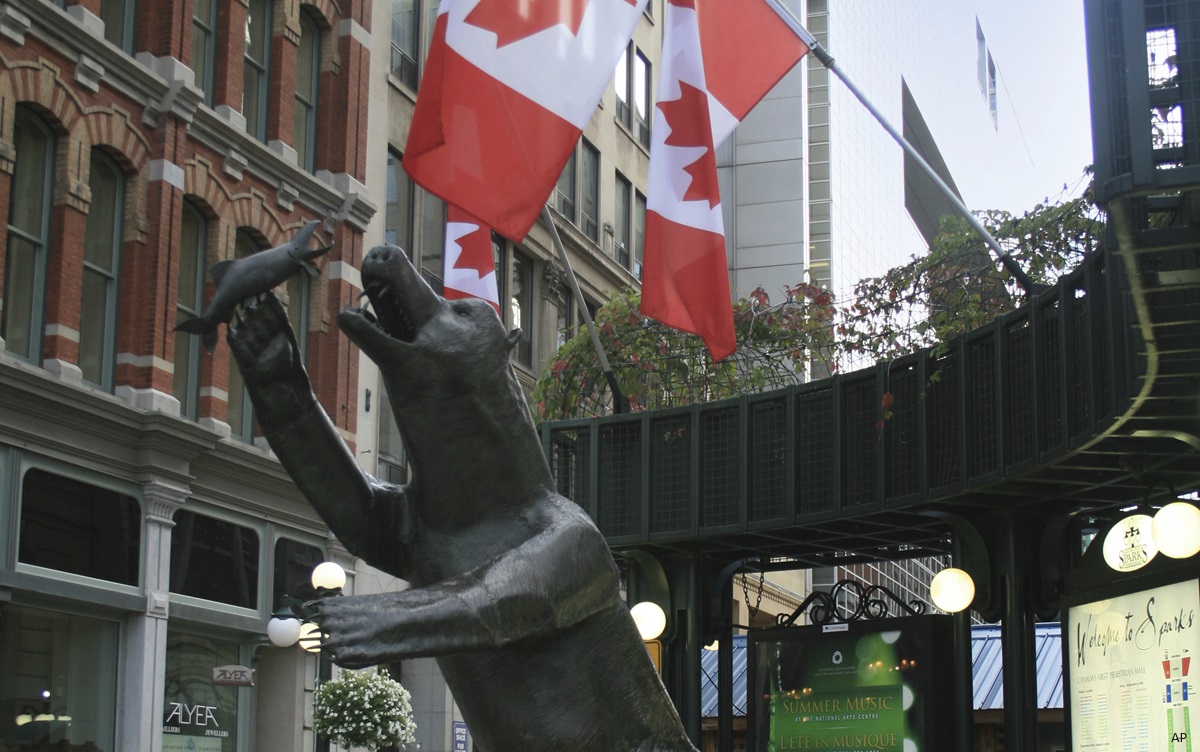
The macro-economic picture in the U.S. is fraught with deep uncertainties, but smaller companies could prove more resilient than their larger peers.
Questions remain about whether the Federal Reserve has finished its monetary tightening, and concerns about a banking crisis and stubbornly high employment figures continue, but veteran portfolio manager Julie Kutasov remains focused. Despite these mounting challenges, she is sticking with a select number of fundamentally strong small-mid cap companies that shine on the downside.
“It looks like the Federal Reserve is at the end, or close to the end [of the monetary tightening cycle]. The Fed has faced a pretty difficult balancing act for several months. But it has been made much harder by the banking crisis,” says Kutasov, co-lead manager of the 4-star rated $563.6 million CIBC US Small Companies. “That crisis, in my view, would do the job for the Fed. It would curtail lending and slow the economy. That makes me more confident that we are very close to the end, if not at the end already. In my view, the market is correct in pricing in the end.”
Banking Crisis Was Good Medicine but No Cure
The rapid rise in interest rates, and the way many banks had structured their balance sheets, might have acted to predict the banking crisis, which began in March with the collapse of Silicon Valley Bank and more recently First Republic Bank. “The fact is it wasn’t predicted. The Fed is really facing a challenging problem now. The banking crisis is coupled with a strong labour market. Both job openings and wage inflation are still above what the Fed would like them to be.”
Although inflationary pressures have certainly abated, they are still pretty significant, says Kutasov, a portfolio manager and senior research analyst at Los Angeles-based Kayne Anderson Rudnick Investment Management (KAR). Kutasov joined KAR in 2001, after earning an MBA at Harvard University and in 2009 was appointed to the small-mid cap equity team. In December 2019, KAR assumed the CIBC fund and replaced sub-advisor Mellon Investments Corp. Established 30 years ago, KAR had US$47.5 billion in assets under management as of Dec. 2022.
Kutasov notes that in early April unemployment declined further and fell from 3.5% to 3.4% in March. “You have very tight labour markets and wage inflation was up 0.5% in April, which is above what the Fed would like to see for its 2% inflation goal. A low unemployment rate is good news for the economy, but it presents a very difficult set of factors for the Fed.”
Meanwhile, an ongoing banking crisis is a major unknown for the economy. “Banks are the backbone of the economy,” says Kutasov. “Lending is the backbone of the economy. So, we are looking at a crisis that is still in the making. Banks have already curtailed lending for the past few months. Now they will be even more careful, especially with commercial real estate lending.” Much of the commercial real estate lending is handled by community and regional banks, notes Kutasov.
Banking Crisis Could Make for Hard Landing
“The majority of them are not seeing their deposits leaving them and they are not at risk currently. But what they do see is that there is significant risk in the market overall,” observes Kutasov. “To be prudent risk managers, they are changing their underwriting standards and being more conservative. So, what you have is a slowing economy, without the Fed’s help. This banking crisis certainly increases the risk of a hard landing.”
Year-to-date (May 15), CIBC US Small Companies has returned 5.20% versus 0.24% for the US Small/Mid Cap Equity category. Over five and 10 year-periods, the fund has returned an annualized 4.27% and 9.98% respectively. In contrast, the category returned an annualized 4.83% and 9.52%.
In general, small and mid-cap companies are more vulnerable to macro-economic trends and developments, partly because they tend to focus on a narrower geographic area and their balance sheets are more leveraged than large companies.
Seeking Small Companies That Are Big at Heart
“But we look at a different universe,” says Kutasov. “As investors in high-quality companies, we are looking at the sub-set of the small-mid-cap companies that exhibit all the characteristics of their large-cap counterparts. We are looking for solid business models and strong under-levered balance sheets which are the result of the self-funding ability of our companies. That is certainly very important in an environment of high interest rates that we are facing today. These companies don’t need Wall Street capital to grow. Our companies are better protected and have the ability to control their markets.”
In searching the universe of stocks, Kutasov begins by looking at quantitative metrics. “Consistency is very important for us, including the companies’ performance during very challenging environments, such as the Great Recession and the pandemic. We look for strong consistent revenue growth, and strong superior profitability relative to the industry. Strong free cash generation and under-levered balance sheets.”
Small- and Mid-Cap Must-Haves
On the management side, Kutasov and her team focus on the company’s ability to be a good steward of capital and be aligned with shareholders. “So, how do we identify the good business models, once the company does well on the quantitative metrics? Now the real work begins,” observes Kutasov. “We spend a lot of time going line-by-line through financial statements and speak to the management team and understand what makes their financial results sustainable into the future. Unless we are able to identify that business model, no matter how attractive the results are, we will not invest in the stock.”
A company that makes the cut may have a strong brand which is expressed in the firm’s pricing power. “Another factor is the network effect, which can be very powerful,” says Kutasov. “Think about a company connecting two fragmented marketplaces. Think of a distributor that is connecting the fragmented buyer and vendor space. They provide great value-added. Finally, scale is the most common aspect of the strong business model. Think about scale in manufacturing, as well as advertising. For distributors, it’s the ability to exercise pricing power with your vendors because you are a significant buyer in the industry. These are the kinds of things that we are looking for.”
Bottom-up investors, Kutasov and her team oversee a high-conviction portfolio of 28 names. From a sector viewpoint, they have allocated about 26% of the fund to information technology, 25.7% to industrials, 19.7% to consumer discretionary, 14.7% to financials, and 11.7% to healthcare. On average the stocks in the fund have a market cap of about US$14 billion. Taking a long-term approach, the team infrequently trades stocks and in 2022 turnover was a remarkably low 9.08%.
Mid-Cap Stock Picks
One long-term example is Jack Henry & Associates Inc. (JKHY), a Missouri-based technology company that has a market cap of US$11.3 billion and provides payment processing services for over 7,000 banks and credit unions in the U.S. “Back in 2008, their revenues increased 11% and return on equity was over 17% during the banking crisis. So you would not know that there was a banking crisis,” says Kutasov, noting the team generally avoids names that are subject to risks surrounding capital intensity. “Unless a bank closed its doors, it still needed the software to run.”
In Kutasov’s view, Jack Henry has benefitted from high switching costs, a strong brand, and a solid positioning in the credit union space. “They have a 50% market share in the larger size credit union segment. It’s an important segment because credit unions are at the forefront of financial technology adoption.”
Moreover, despite the banking crisis, Kutasov notes that banks are not curtailing their investments in technology. “We live in a digital world, especially after the pandemic, which accelerated the transformation. Consumer and business customers seldom go into a branch. They are accustomed to using technology for their banking needs. And technology has levelled the playing field between large financial institutions and smaller ones. Those smaller firms which Jack Henry serves also need the same level of technology. For competitive reasons, and even with tight budgets, they are not willing, or able, to curtail their spending on technology.”
On a valuation basis, Jack Henry is trading at 17.7 times enterprise value to earnings before interest taxes depreciation and amortization. The stock, which has a dividend yield of 1.4%, has been in the portfolio for over 20 years.
Another example is Watsco Inc. (WSO), the largest independent distributor of heating ventilating and air conditioning equipment in the U.S., which has a market cap of US$12.2 billion. “It is three times larger than the nearest competitor and yet it has a low teen percentage points market share. So, it is a very fragmented marketplace,” says Kutasov. “Not only is the buyer marketplace fragmented—there are about 90,000 contractors in the U.S.--but the market where Watsco plays itself is highly fragmented. What they are doing is consolidating this very fragmented market, and gaining further scale. With that scale come pricing power, purchasing power and the ability to invest in technology. Watsco has invested a great deal in technology, something their smaller peers cannot afford to do. As a result, they have taken market share,” says Kutasov, noting that the firm has an under-leveraged balance sheet and the management team is well aligned with shareholders.
Watsco is trading at a trailing price-earnings ratio of 23.8 times and generates a free cash flow yield of 4.8% and a dividend yield of 2.9%
Stay Focused on the Downside in a Downturn
Reflecting on the past, and with a view to the future, Kutasov maintains that the small-mid cap companies in the portfolio are not the ones to recover first should there be a robust recovery. “That’s because they don’t decline as much during a downturn. For us, the most favourable scenario, when talking about a recovery, is a shallow, more protracted recovery, versus a speculative or robust one, where companies that decline the most also recover the most. Most important, in a protracted downturn, we believe we should be protected on the downside. Our companies should perform better.”








.jpg)













